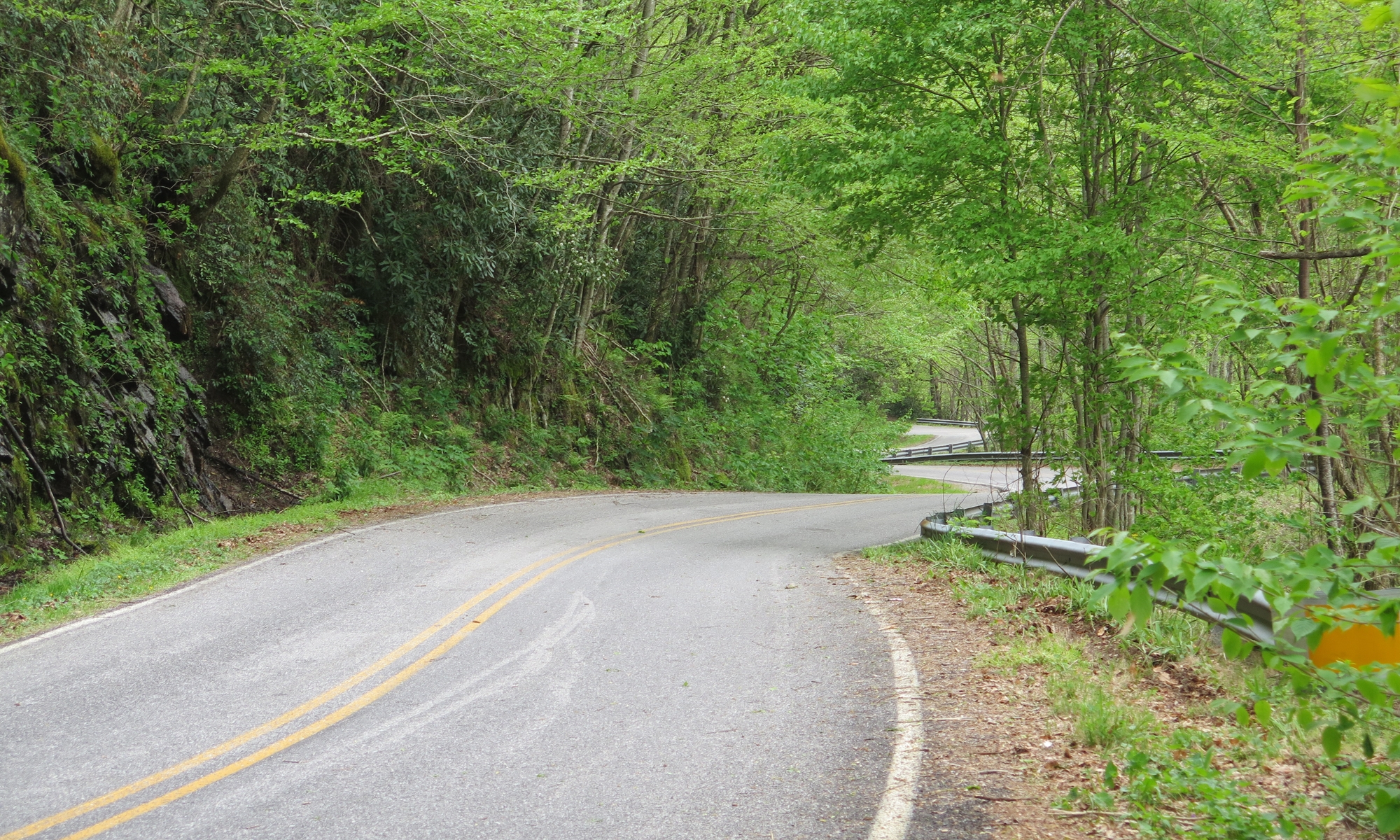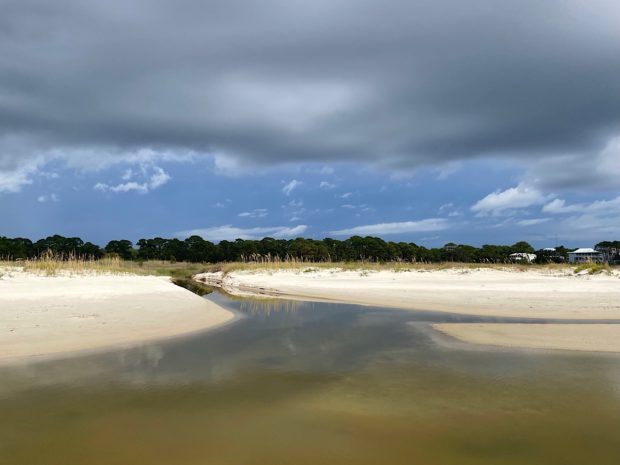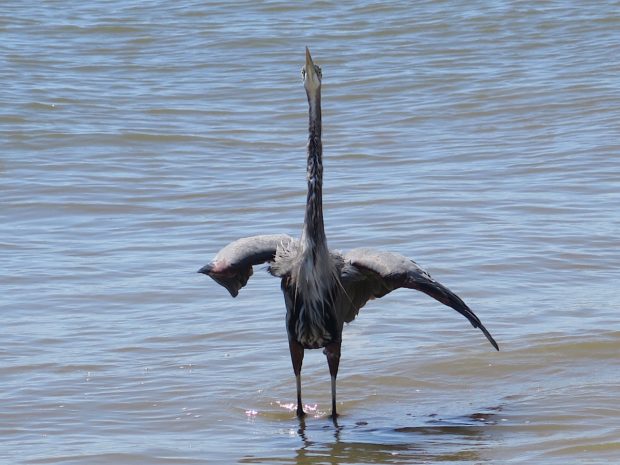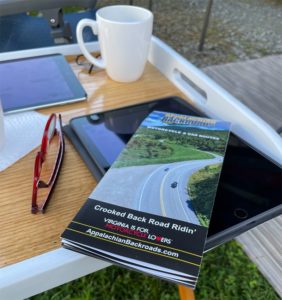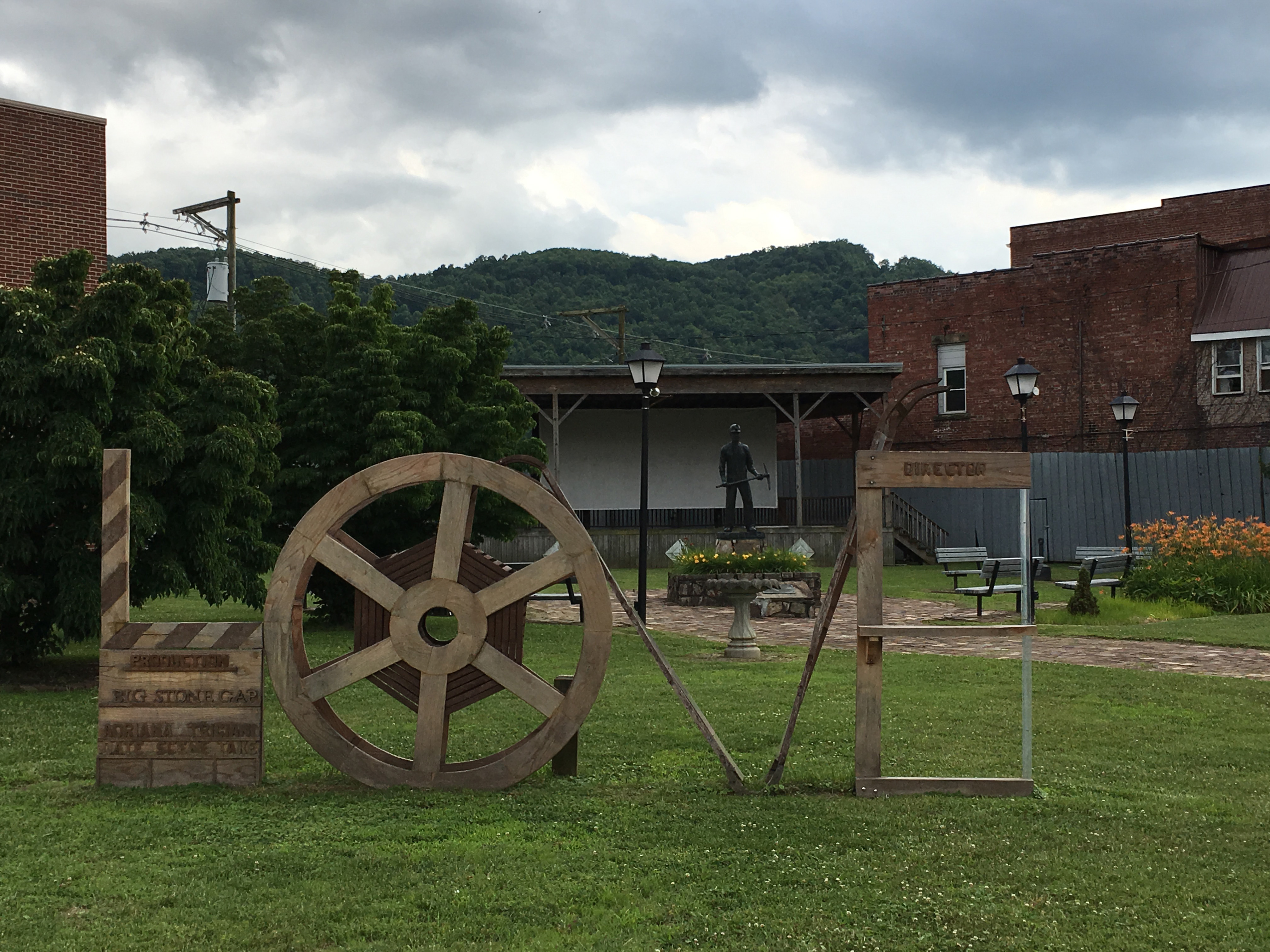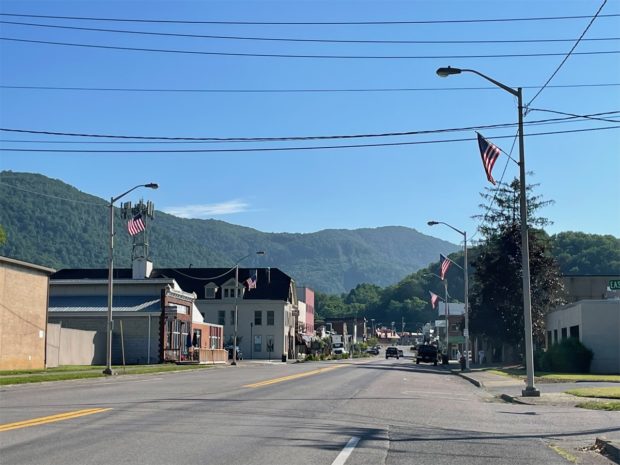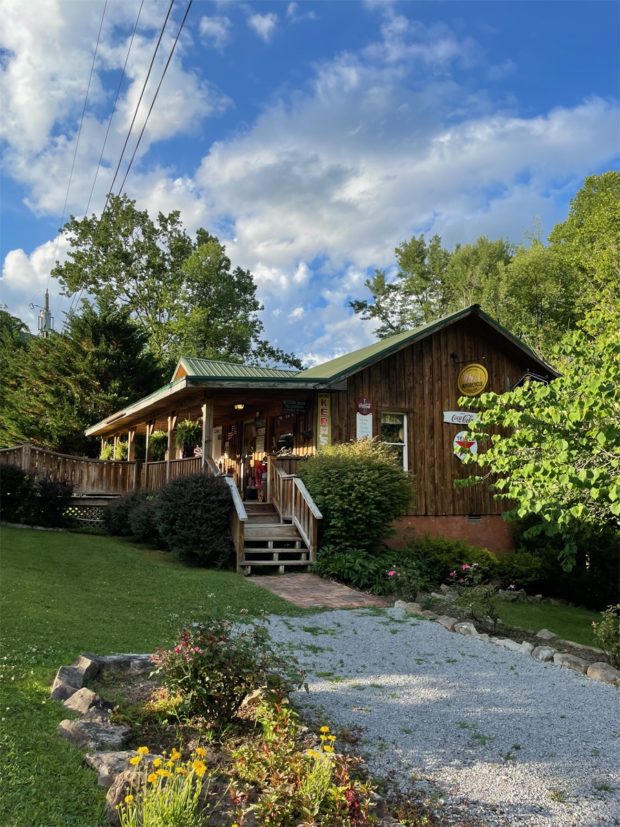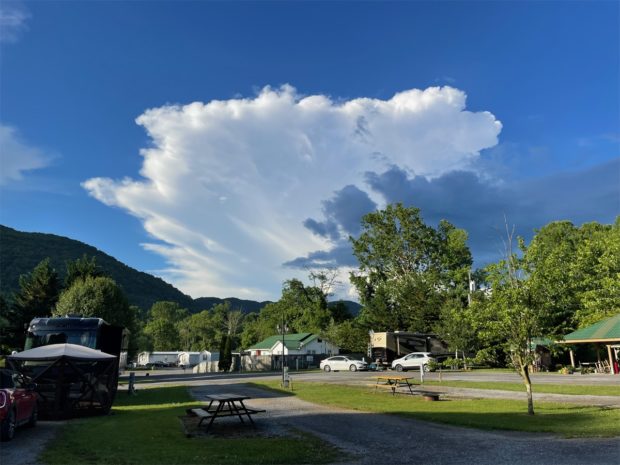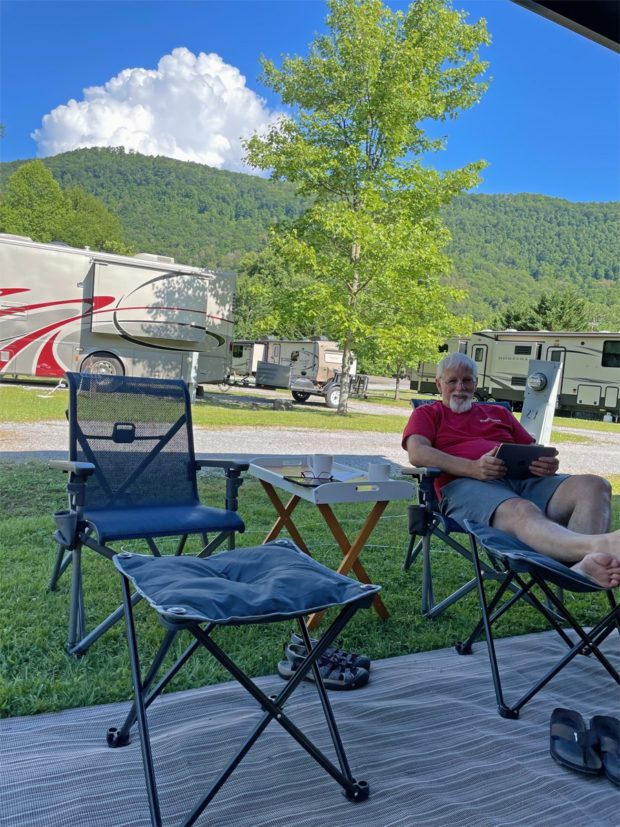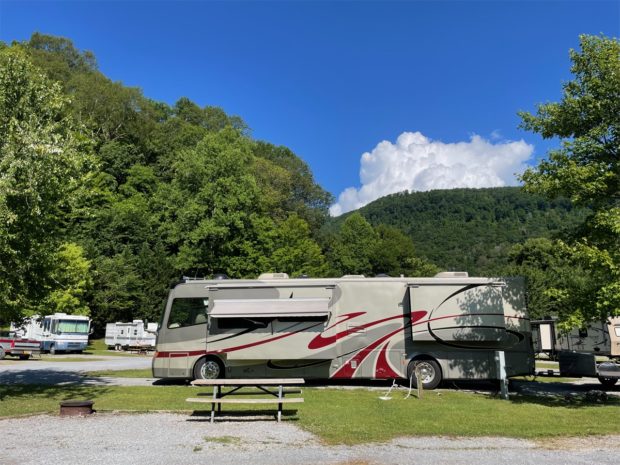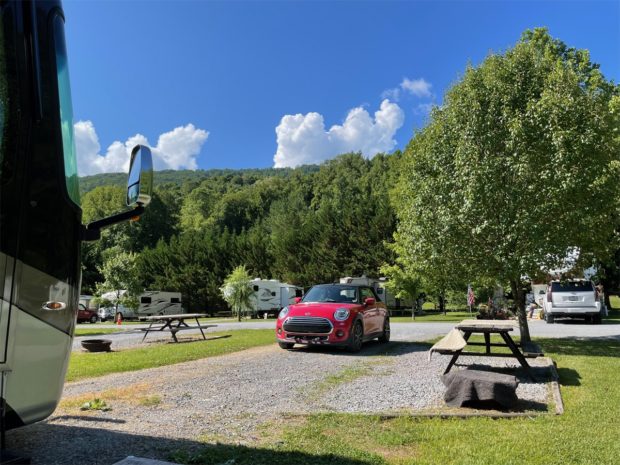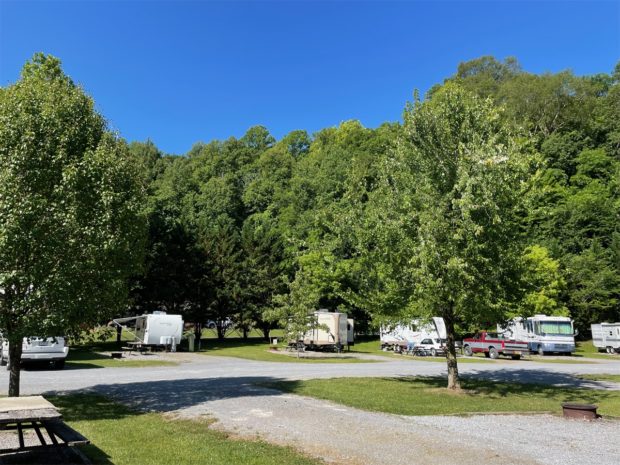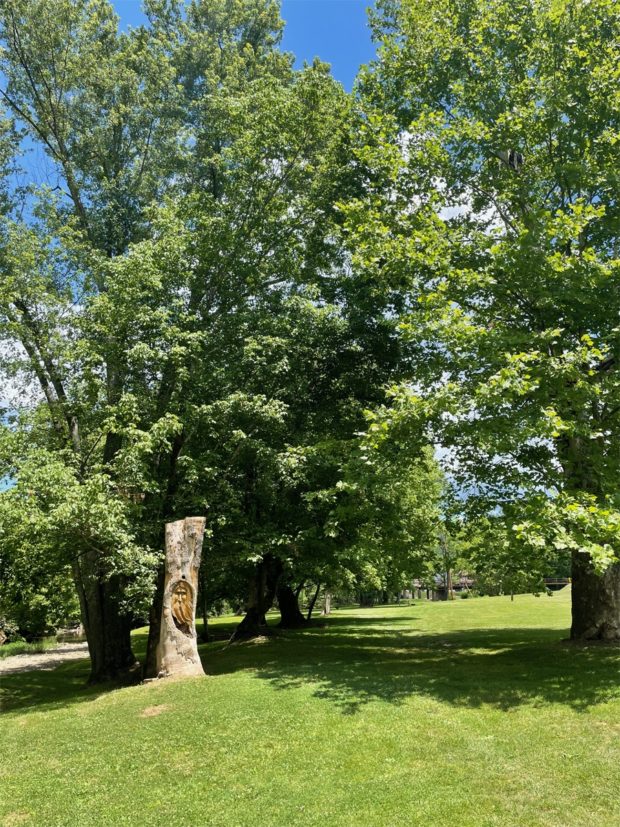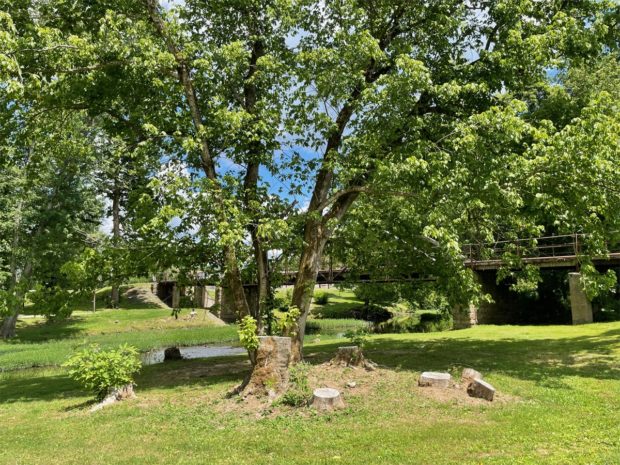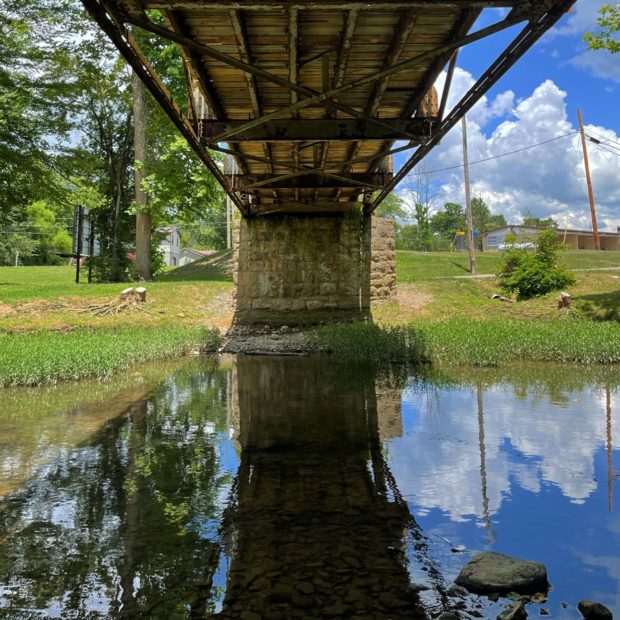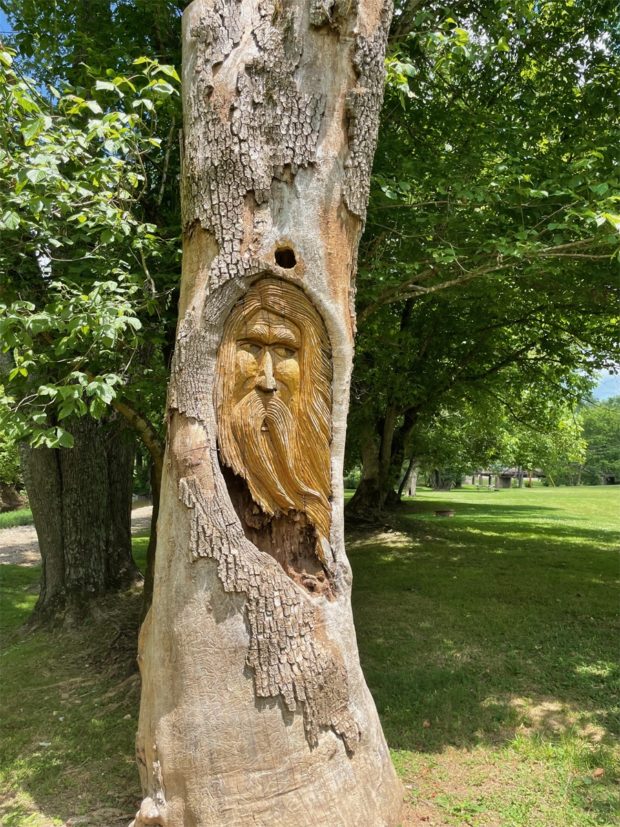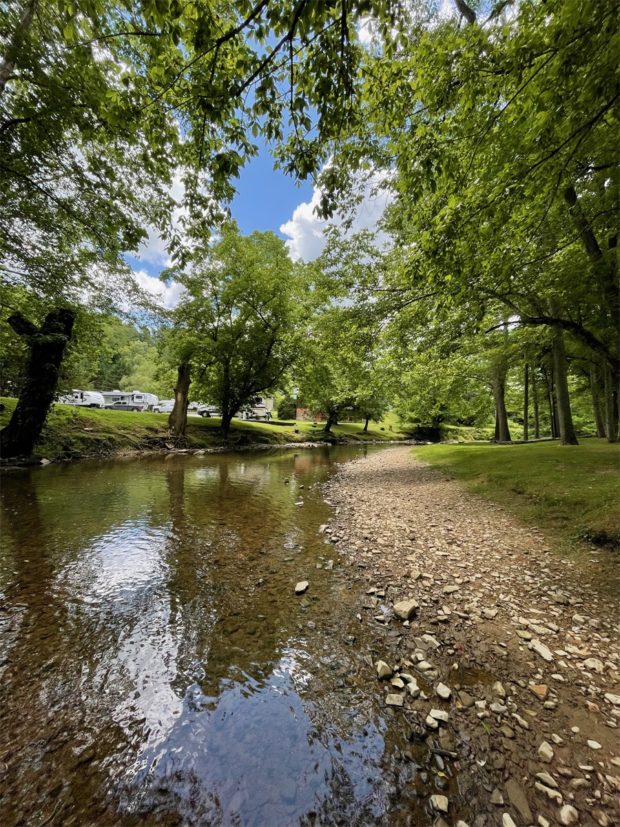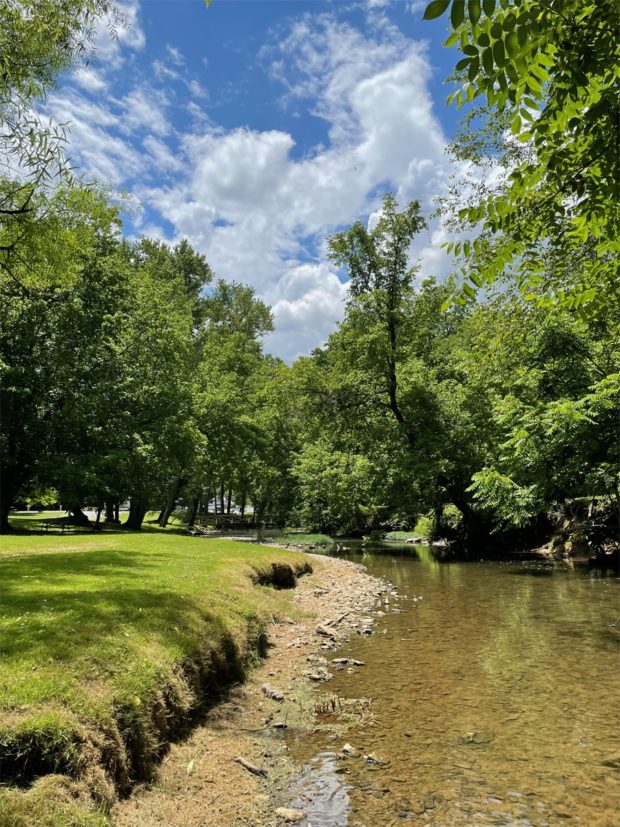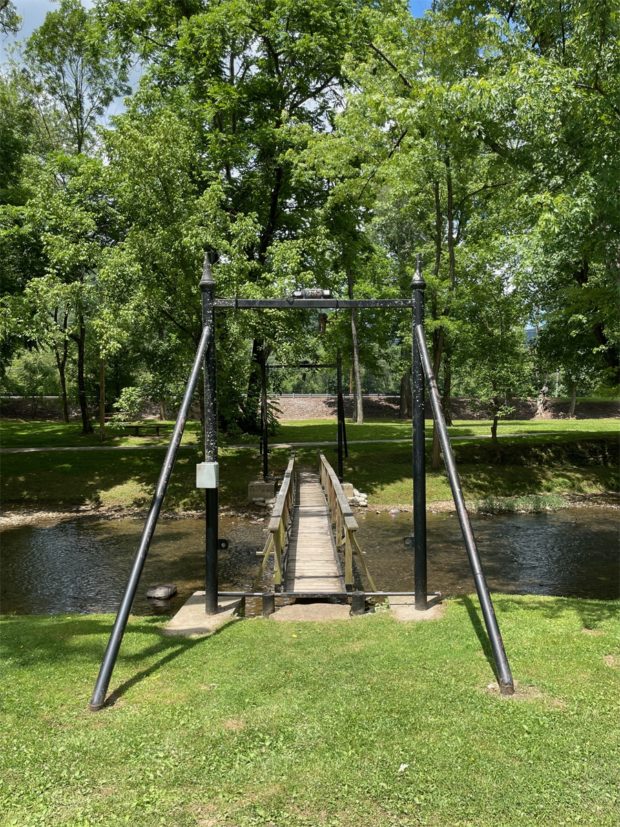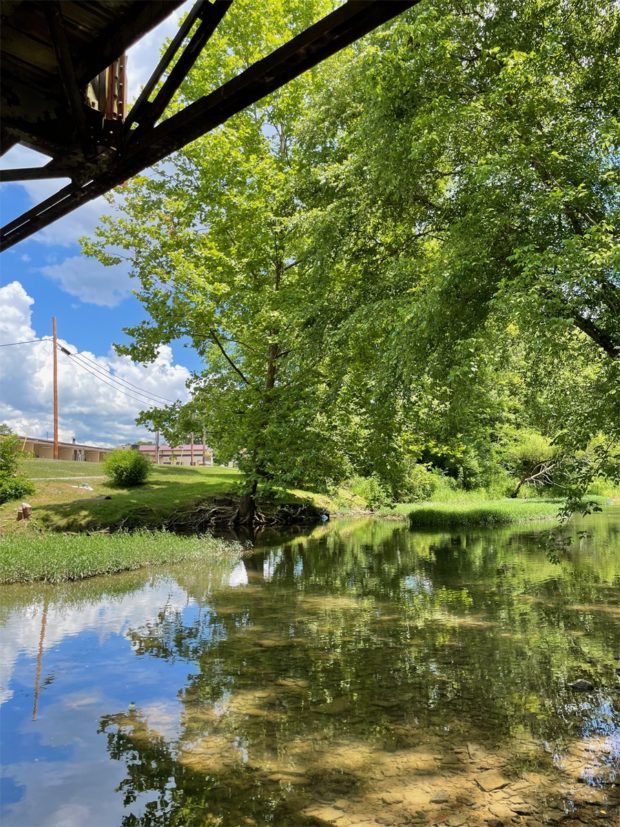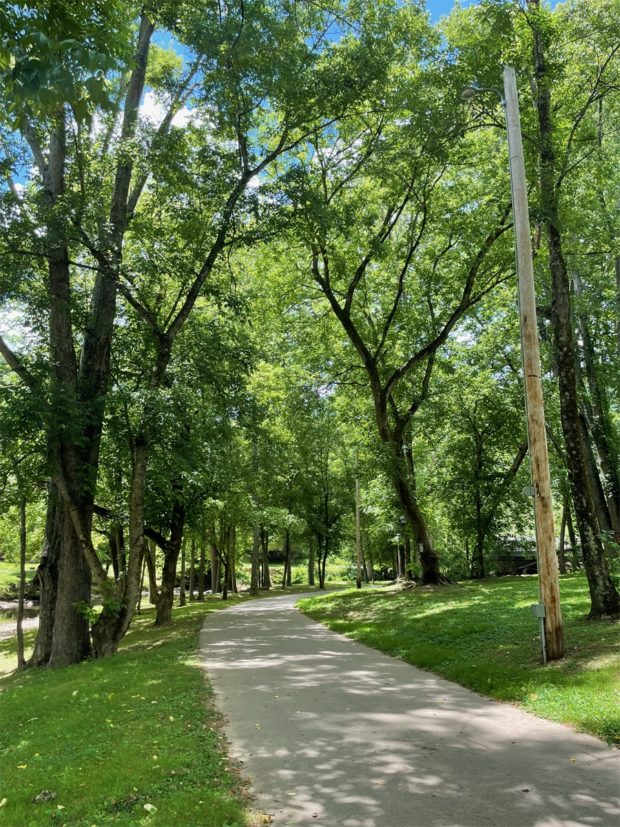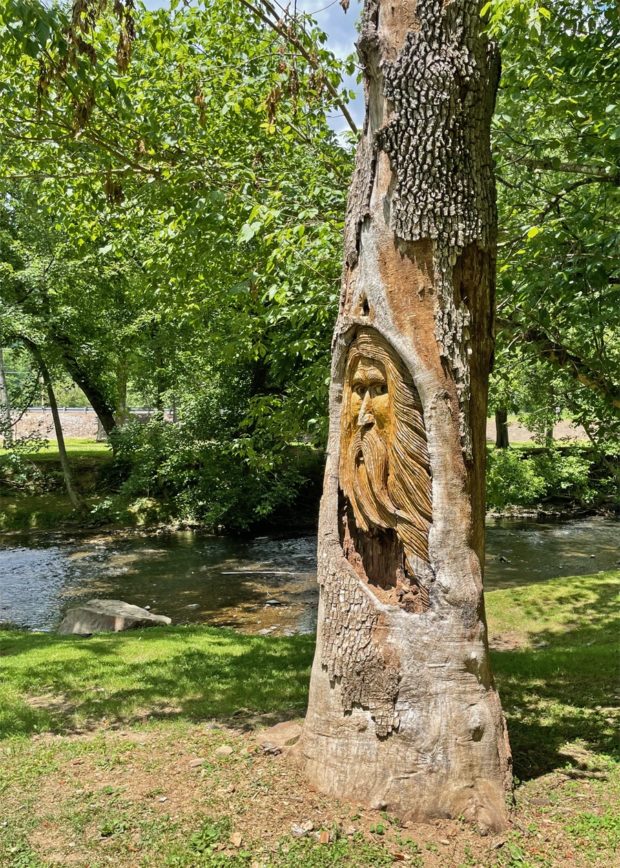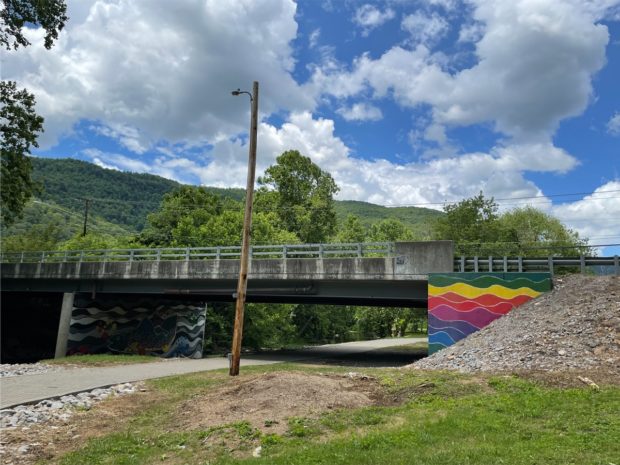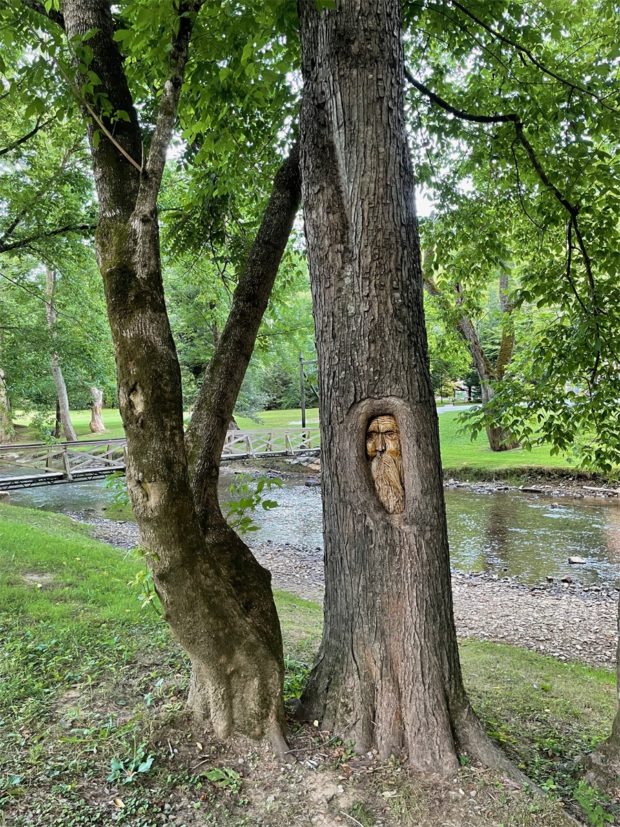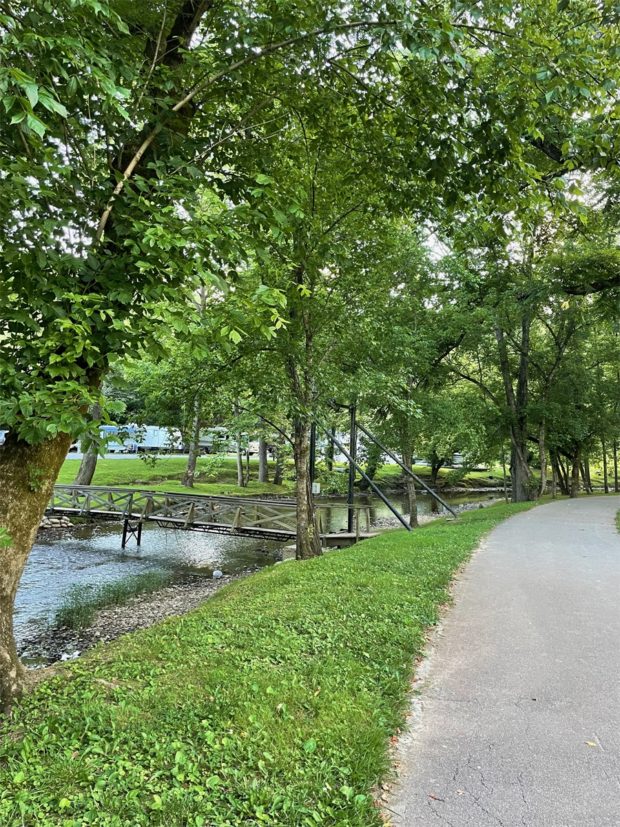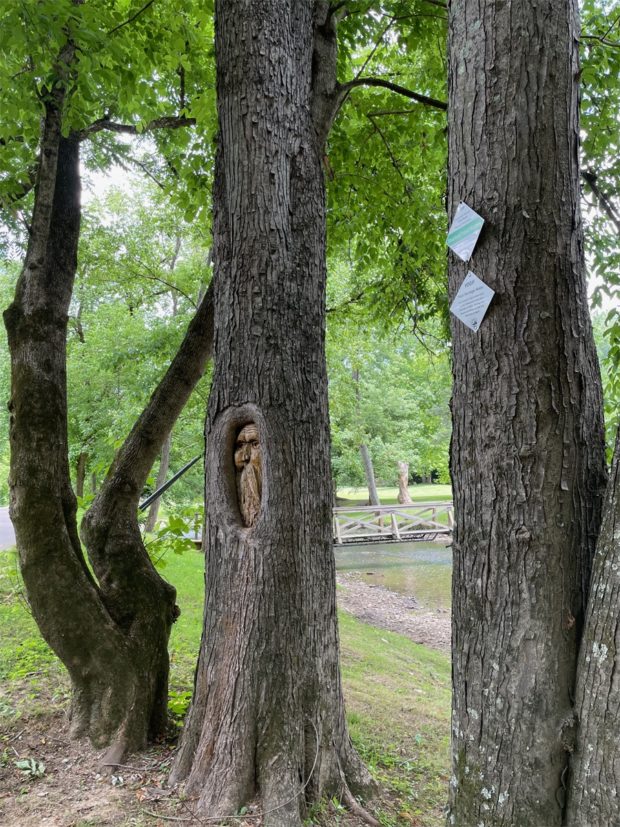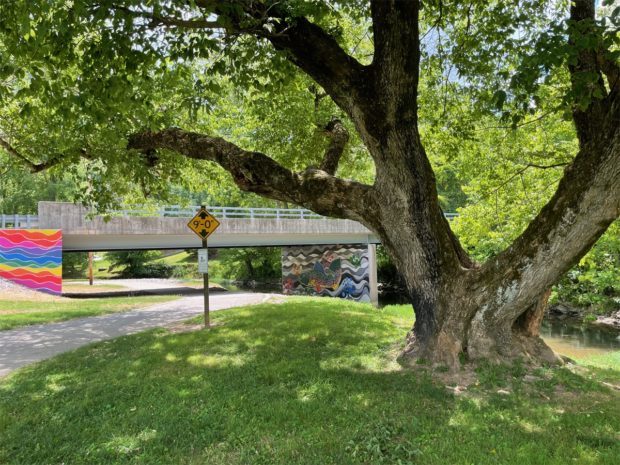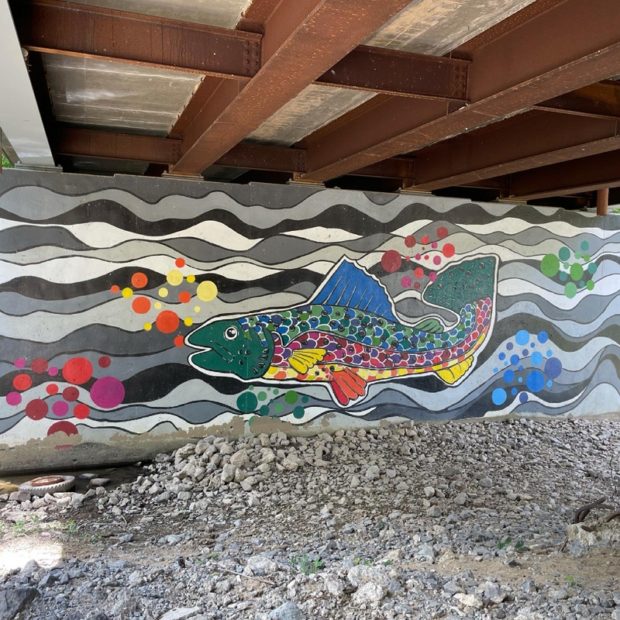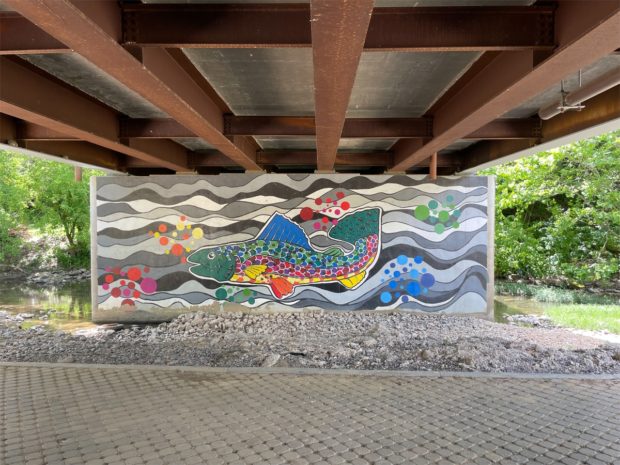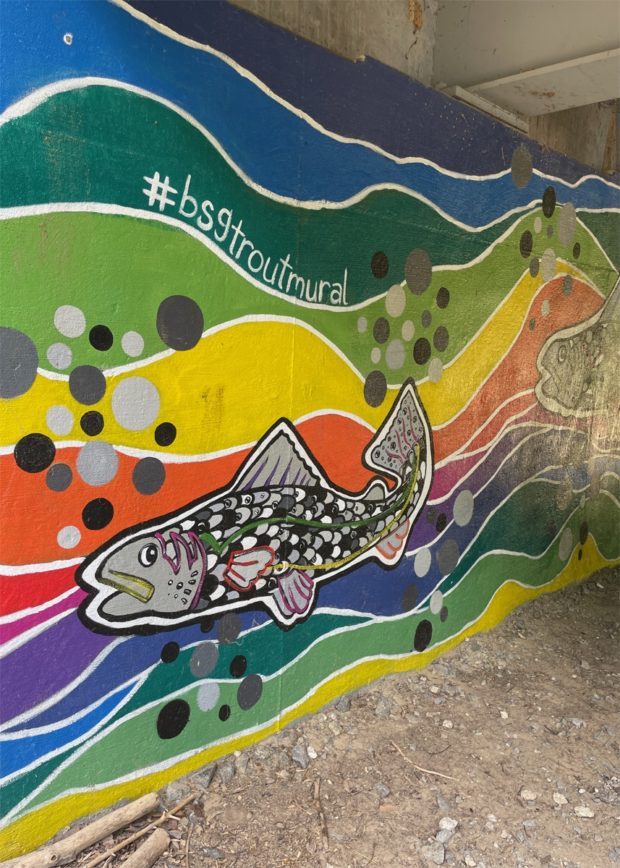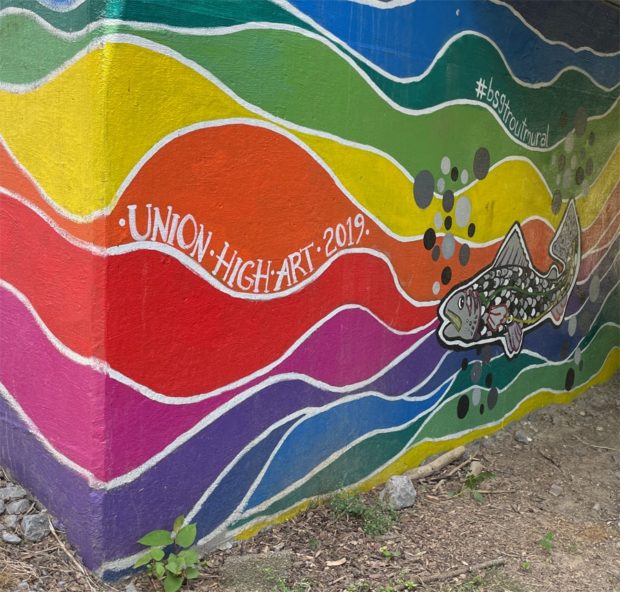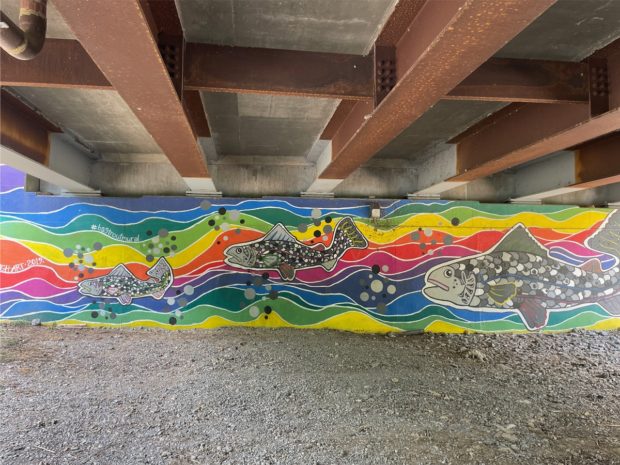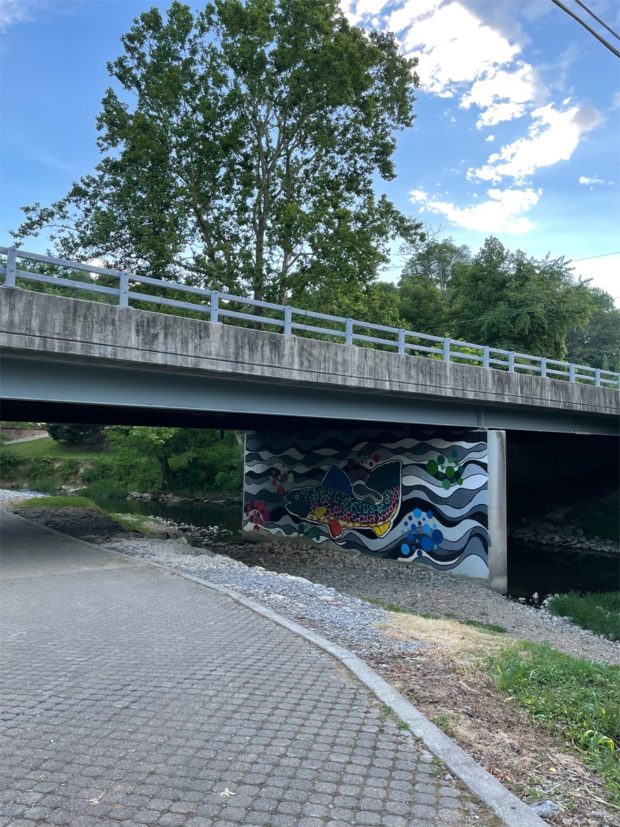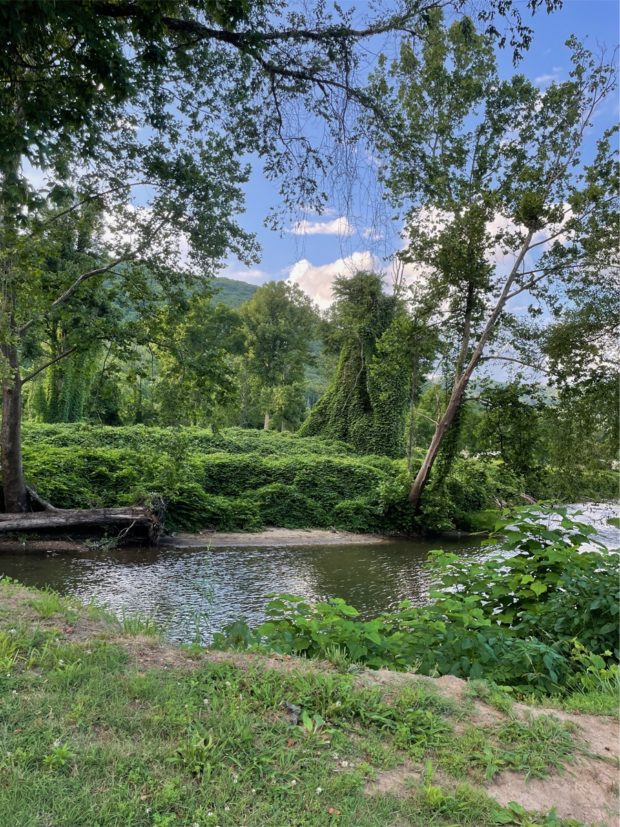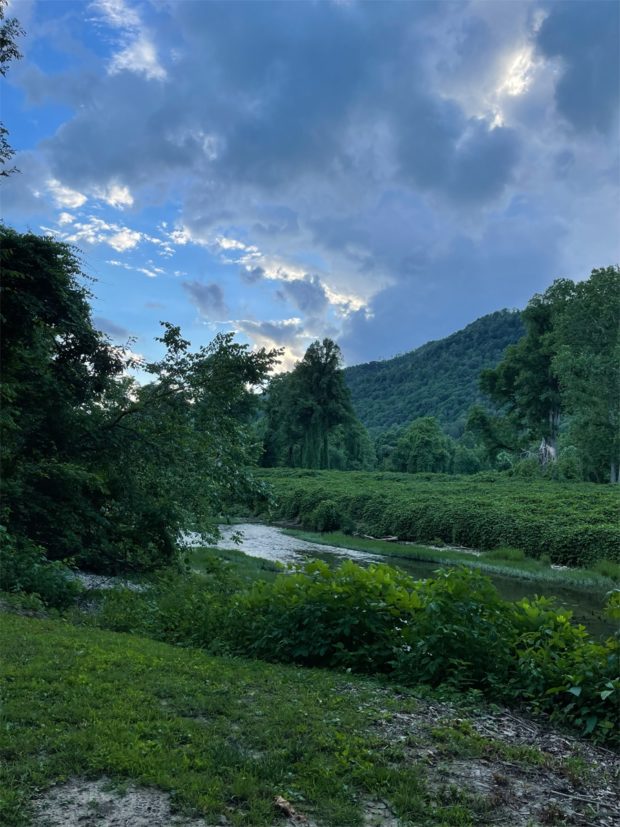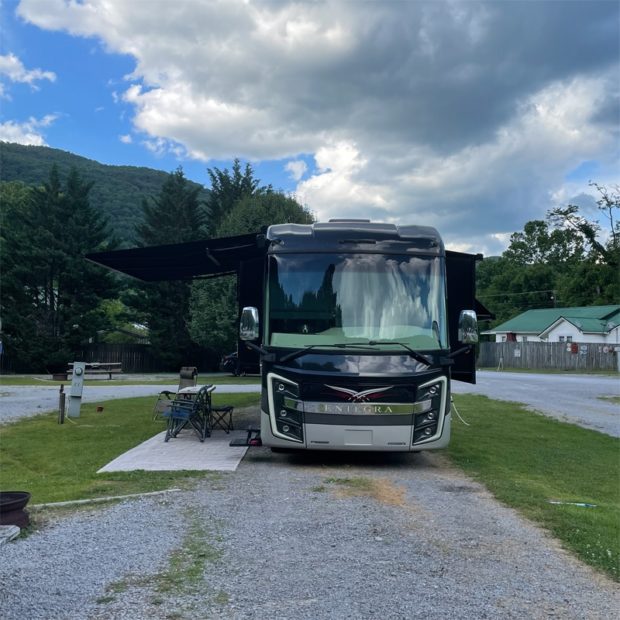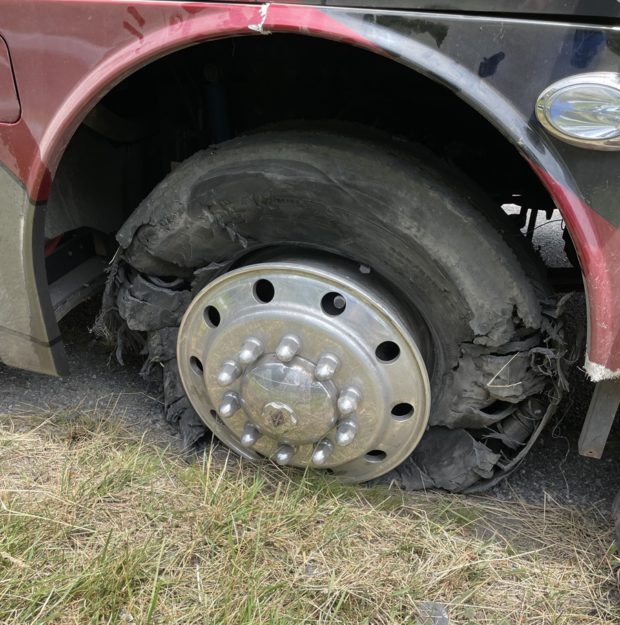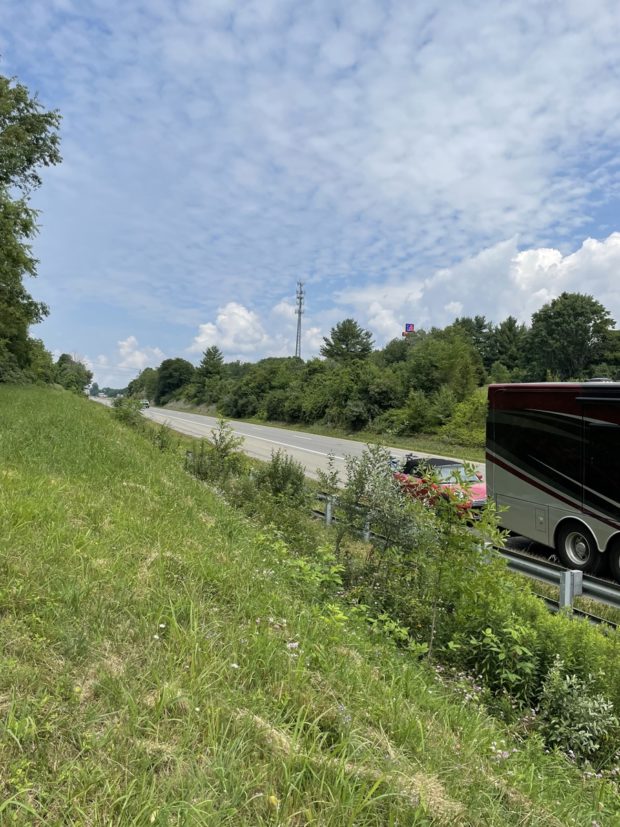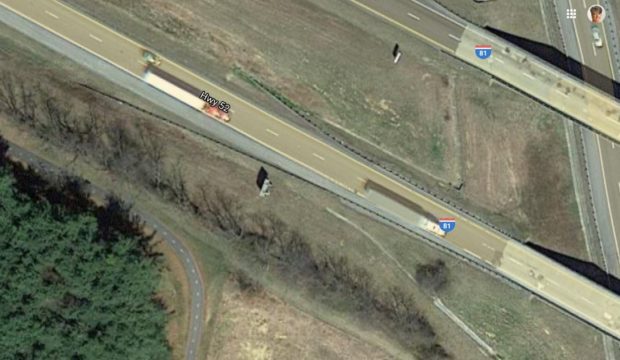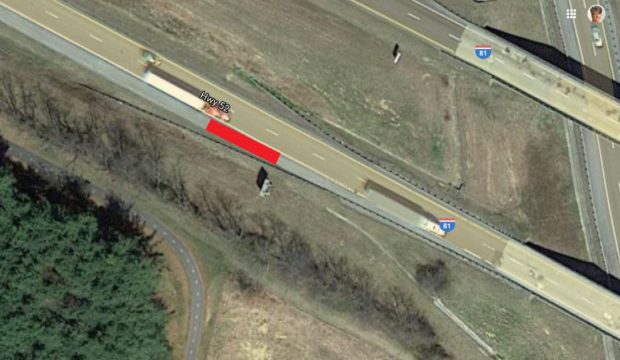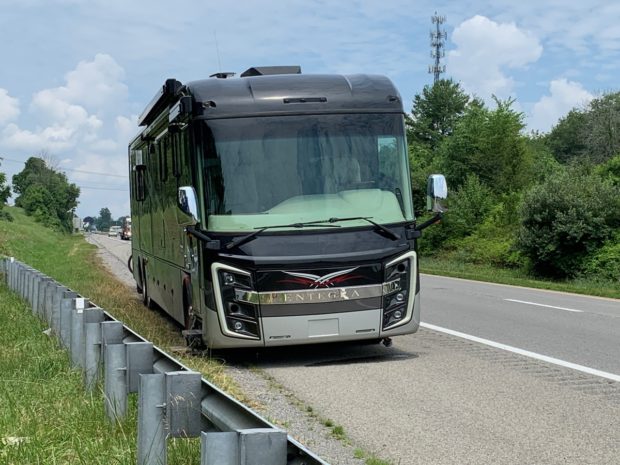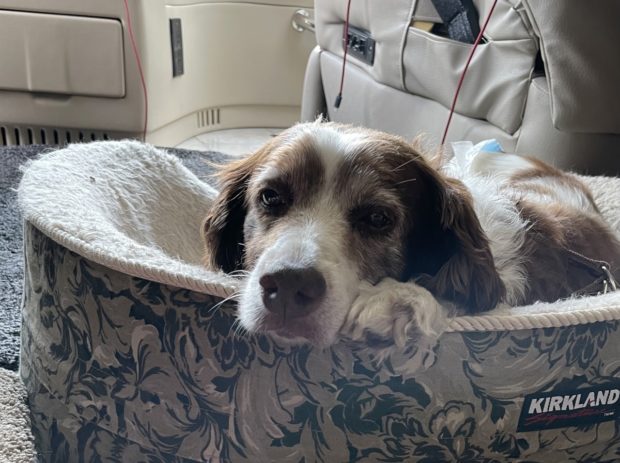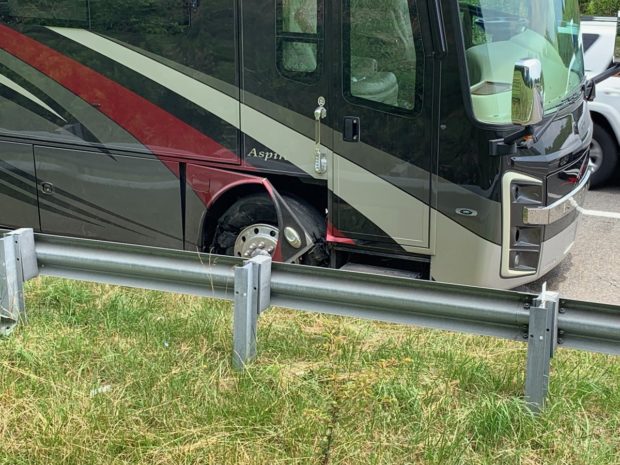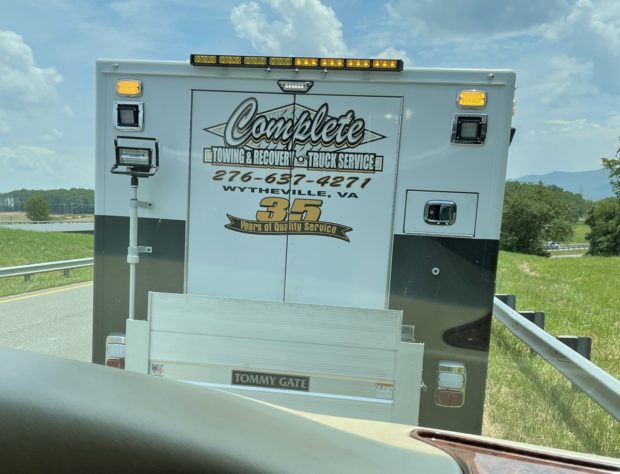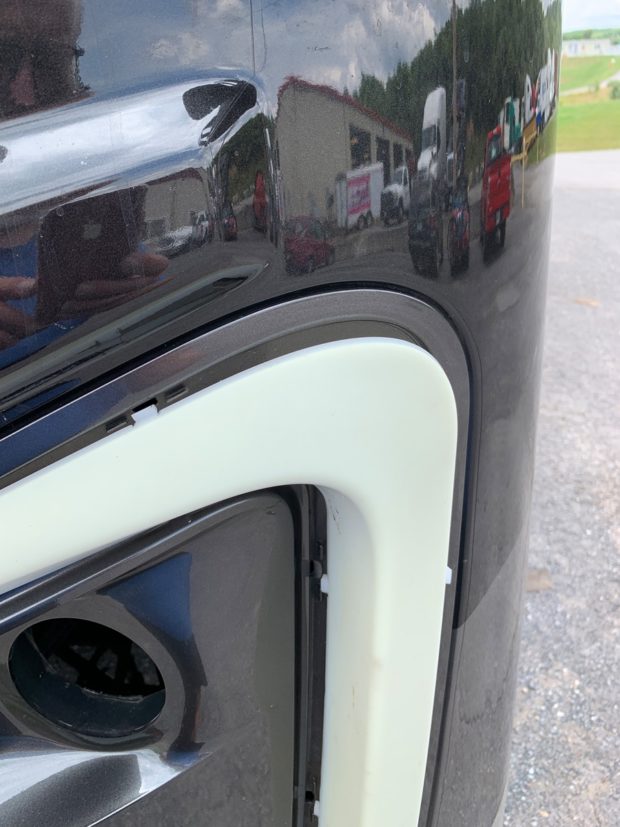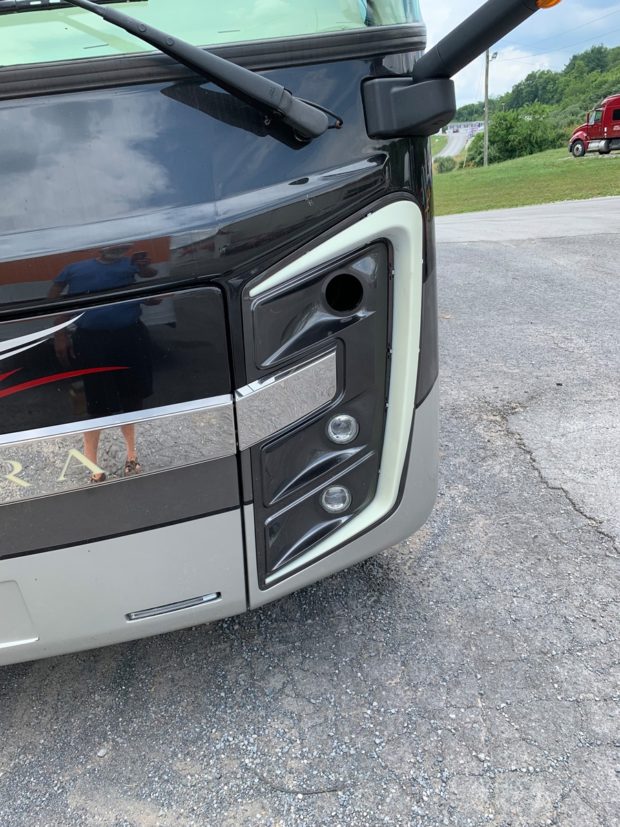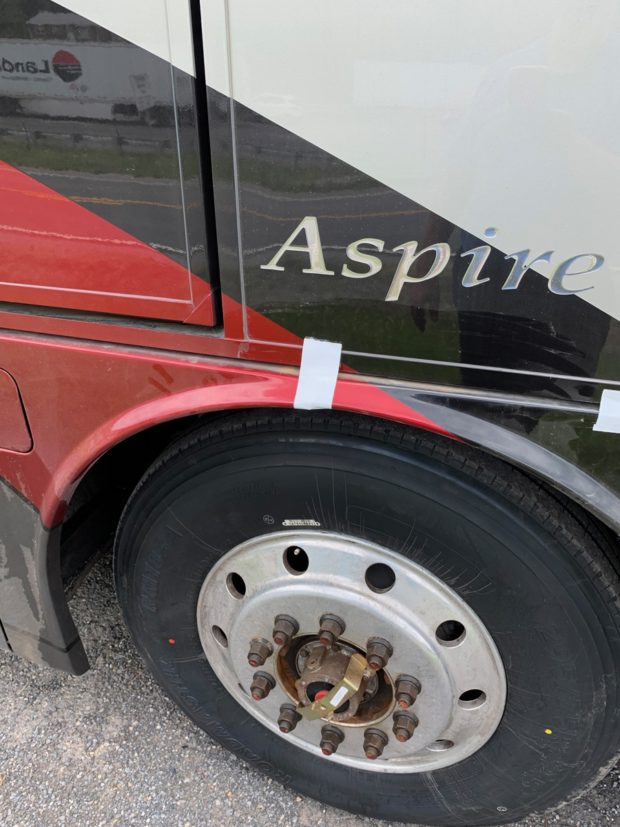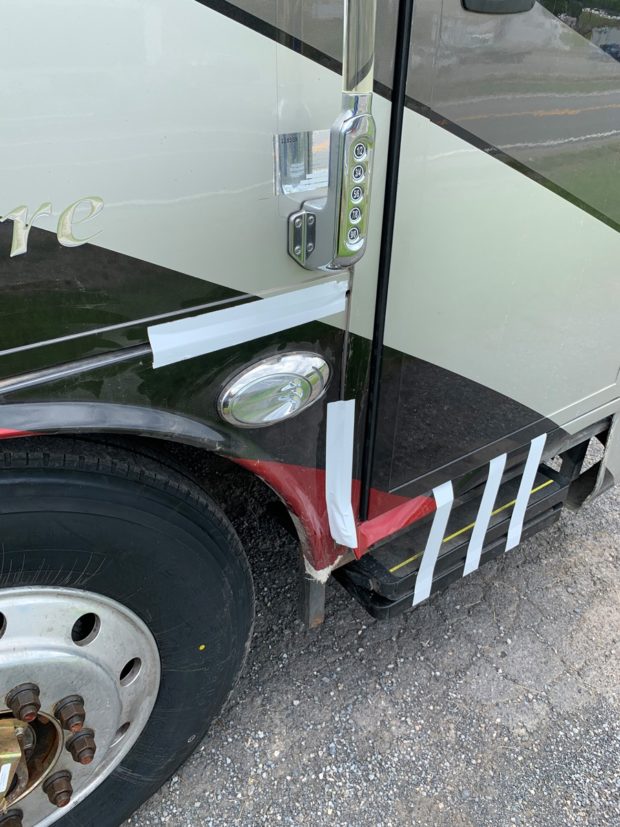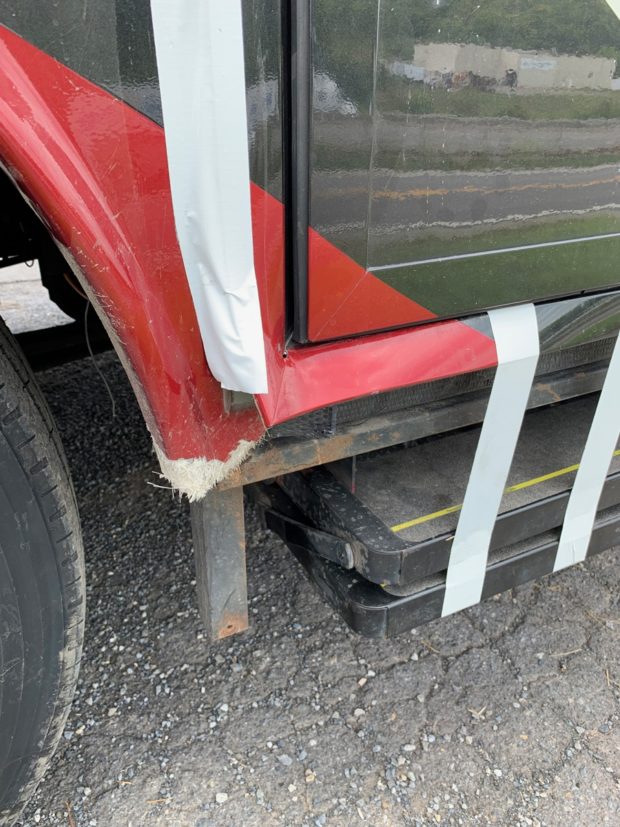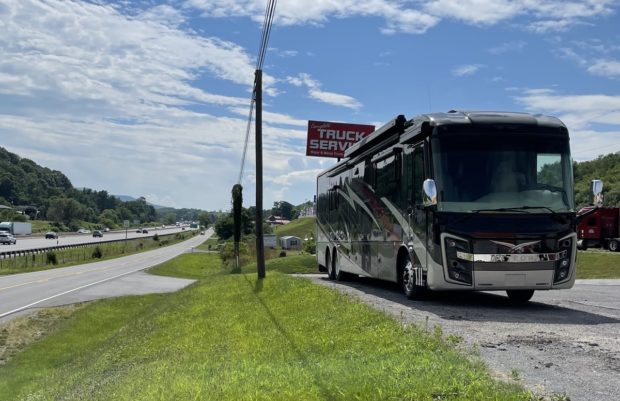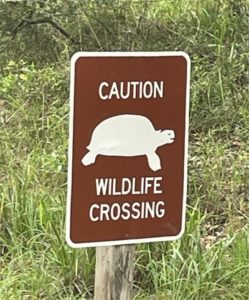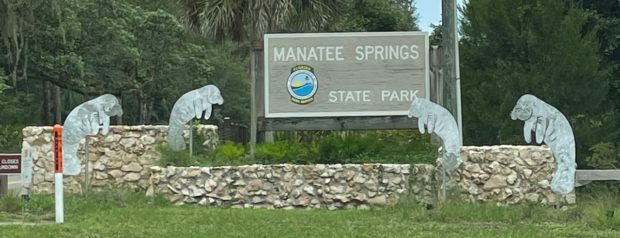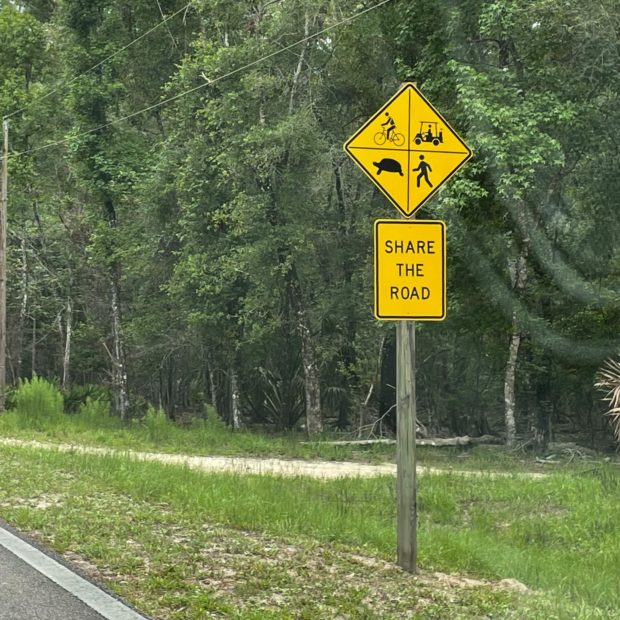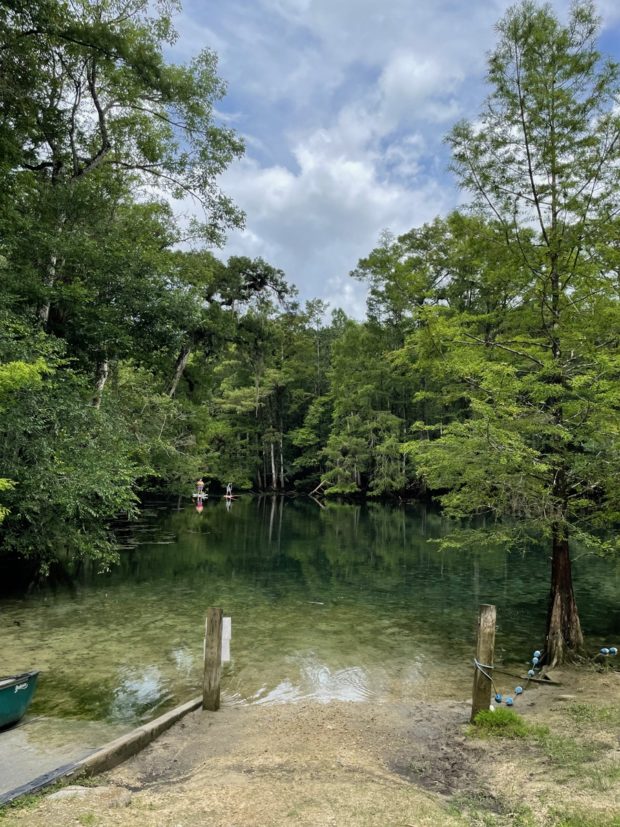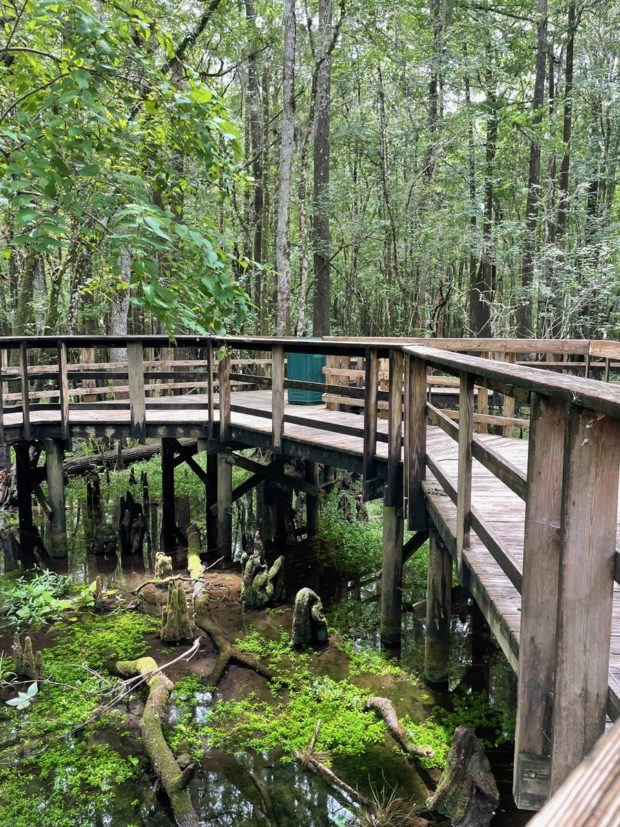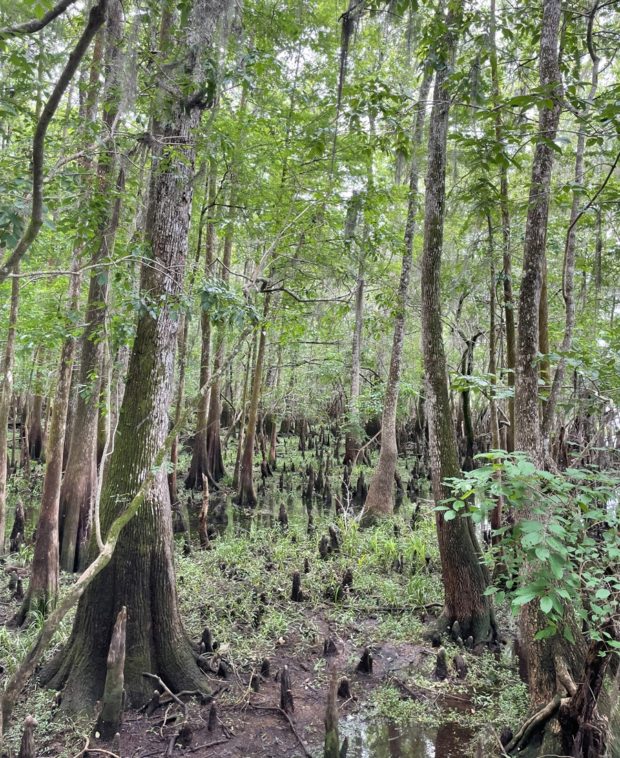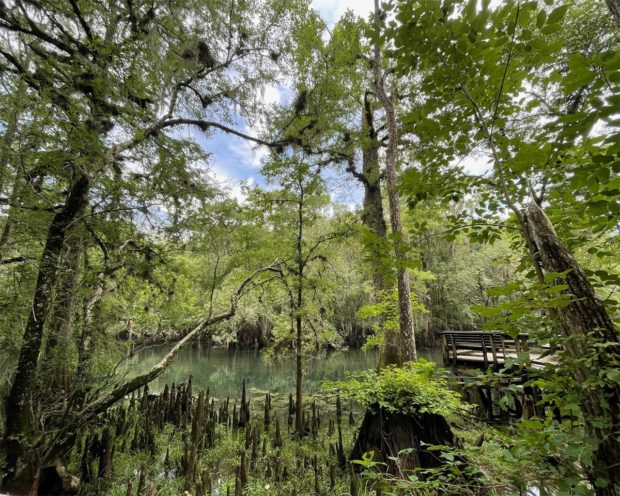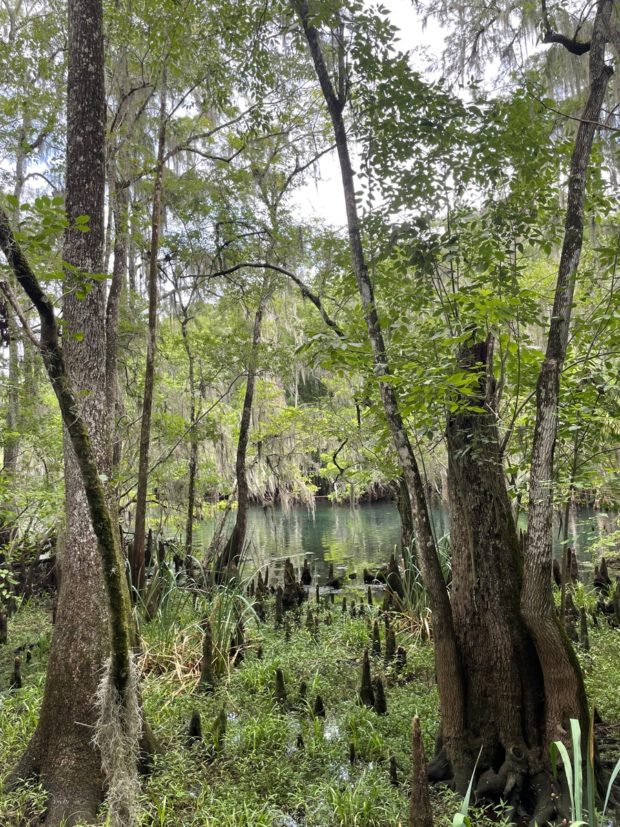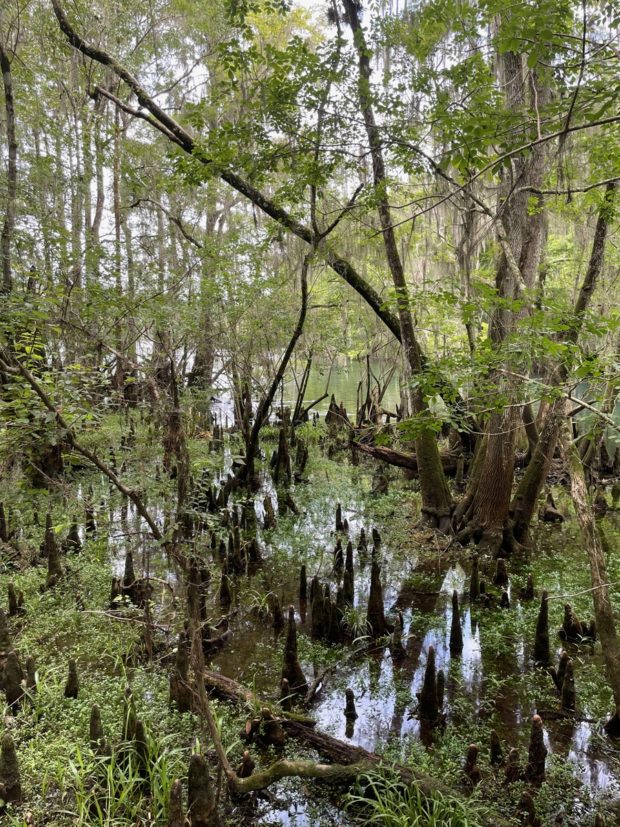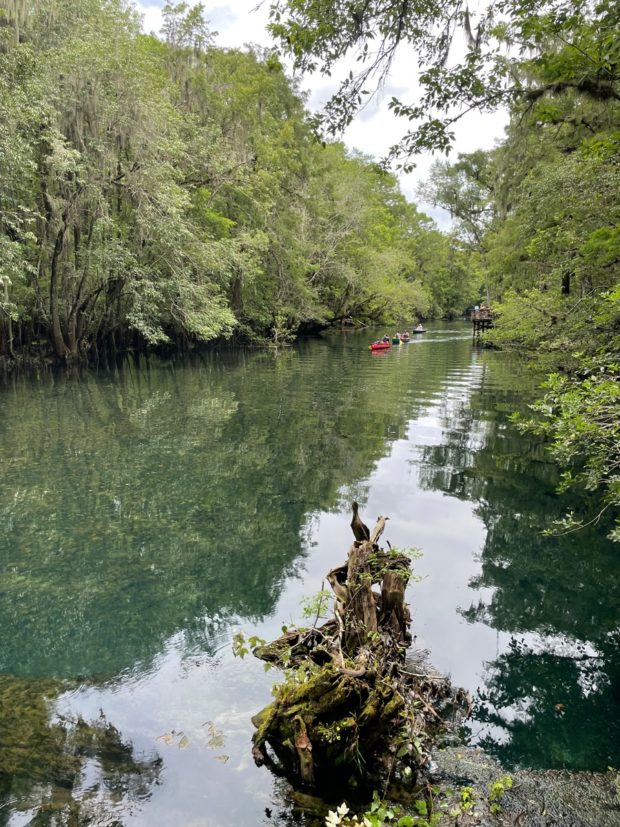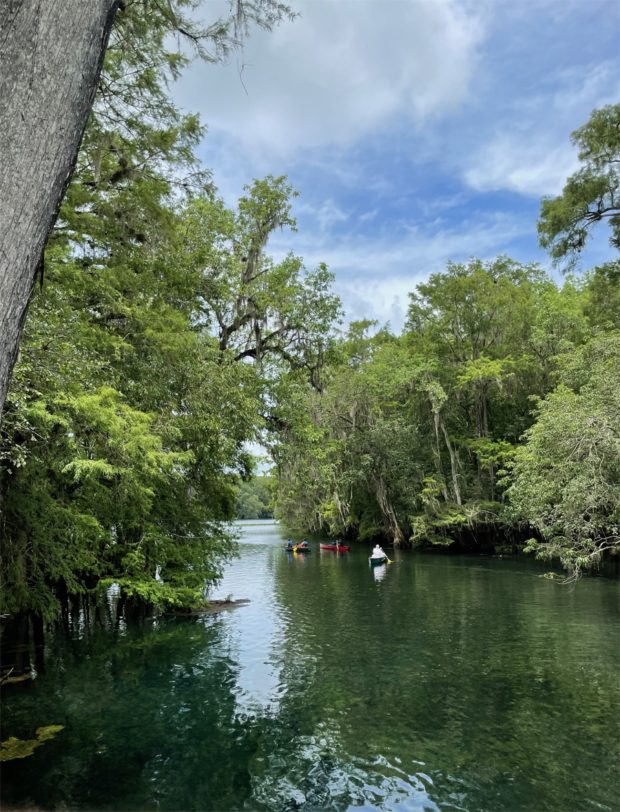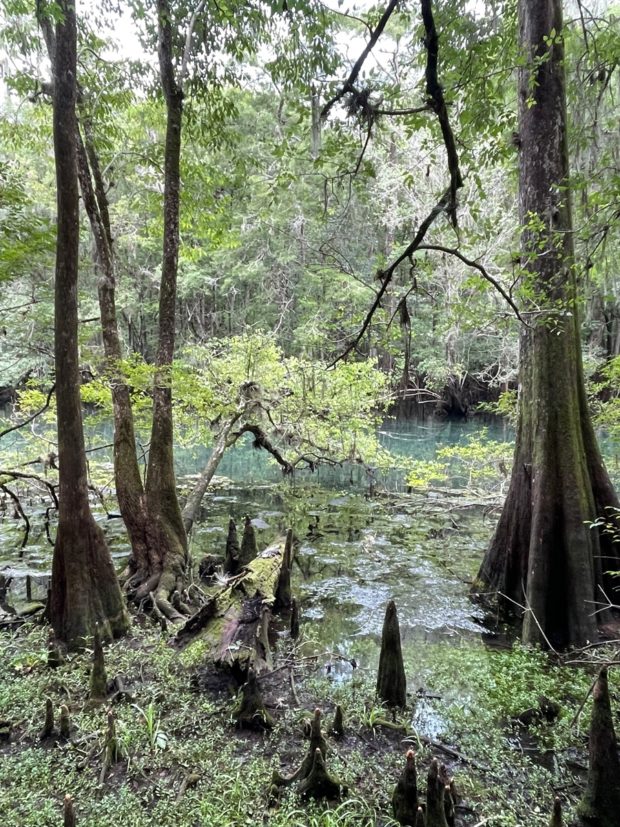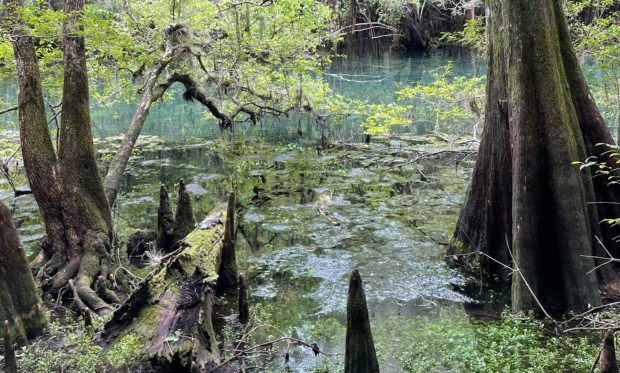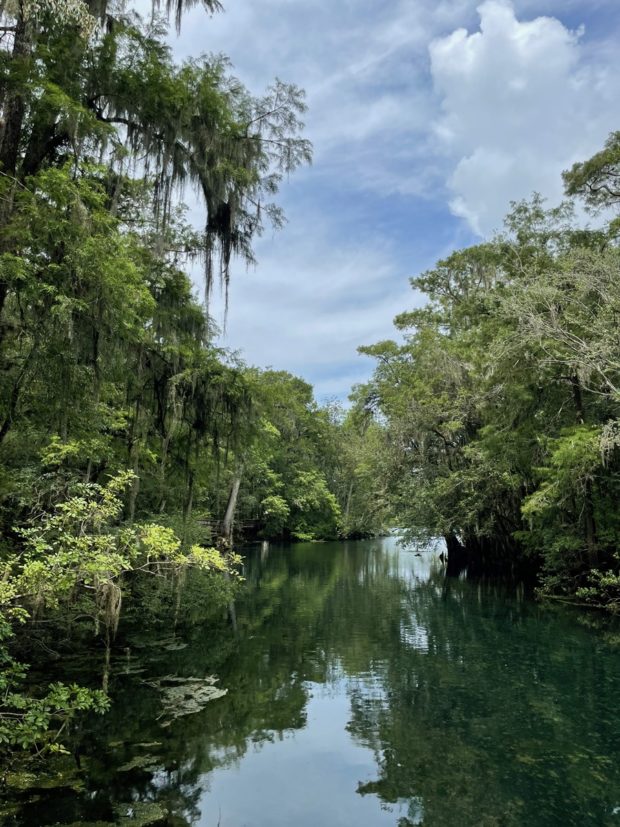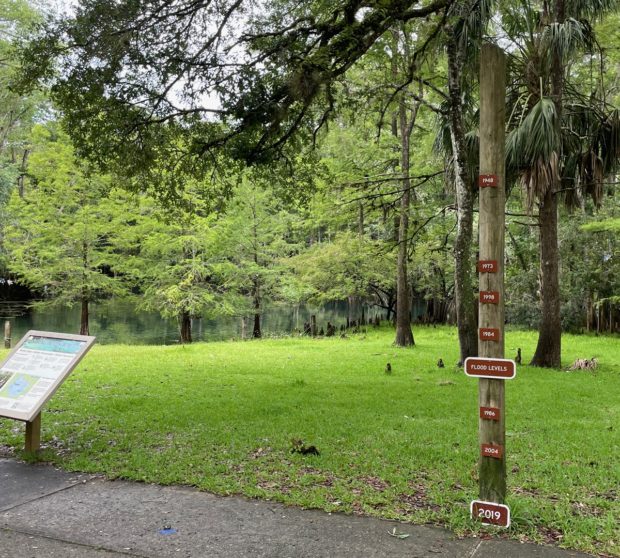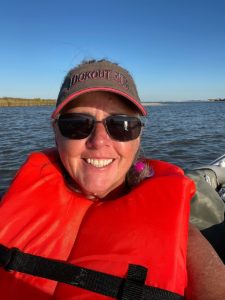
If you’ve seen our “places” map and list created by Mike, you know we’ve been hanging out in the southeastern US since we became full-time RVers in May. We arrived at our current location — Alabama’s Dauphin Island — on October 1 and will be here until December 1. This is the place I’d been most looking forward to as it has the best of both worlds for both of us. Endless beaches and other water activities for me and plenty of flatland and bicycling opportunities for Mike.
Everything I’d read before arrival said October was the best month to be here, weather-wise. We had some 80+ degree days early in the month with high humidity, but most days were in the upper 70s with night temps only dropping into the 60s. The sea temperature was 79 when we got here and has only dropped to 75. Compare that to the water temperature in Ocean City (OC), Maryland, the beach closest to where I grew up, where the water usually only hits 75 in August. In OC, the water starts cooling off again at the end of August/early September. Now, in OC, the water is already in the mid-60s. So 75 still feels warm(ish) to me.
We did have some strong storms pass through late last week, which brought about half a day of heavy rain and several days of strong winds. Yesterday, the weather was perfect. Temperatures only reached the low-70s and there was little to no wind. It was a great day for kayaking.
When I started out, there was no wind. Zero. The water was not only flat (no swells or waves at all), it looked like glass. The only surface movement happened when fish jumped out of the water or schools of fish fluttered just beneath the surface. Of course, my paddle made noise and caused ripples as I made my way across the surface, too.
Every now and then, as I made my way across Dauphin Bay, I would stop paddling and just sit still watching the world around me. At one point, with the surface still in its glass-like state, I saw a pair of large birds flying straight toward me, about 10 feet (a little over three meters) above the water. As they got closer, I could see they were Brown Pelicans. When I realized it was so quiet that I could hear their wings flapping, I chuckled and said, “Hello, pelicans!” My voice startled them a bit so they veered slightly off course, but otherwise continued on their way.
The wind did eventually resume. Lucky for me, it was blowing toward the direction from which I’d set off! I turned around after covering a few nautical miles and alternately drifted and paddled my way back toward home. It was very peaceful and relaxing. In the image below, you can see the water was still pretty flat, but no longer like glass.
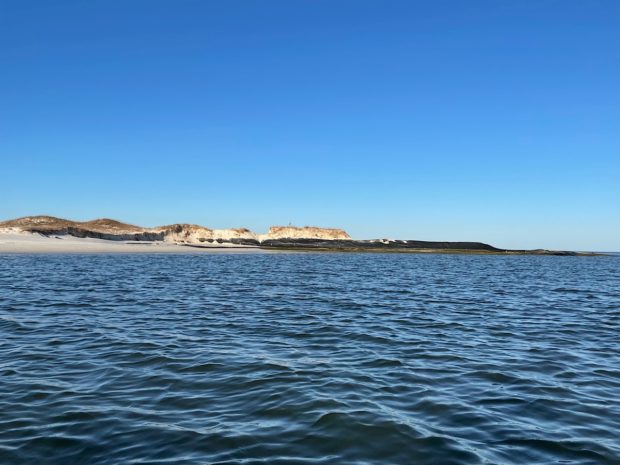
Even if I never get to use my kayak again, I will forever be grateful that I took the plunge and made that purchase. Yes, it and its accoutrements eat-up valuable basement storage space, but getting to experience magical days on the water like yesterday is priceless.
This Earth of ours is such an amazing place!
The inflatable kayak creates a couple of logistical challenges. It does deflate and can be folded for relatively compact storage, but it’s sort of heavy. I bought a hand-truck so I could carry it to the water, but that meant I’d have to deflate it every time I used it. What I really wanted, especially when we are camped in close proximity to water, was to be able to leave it inflated and transport it to and from the water. That’s why I bought a two-wheeled kayak cart. I’m happy to say, it works exactly as I’d hoped.
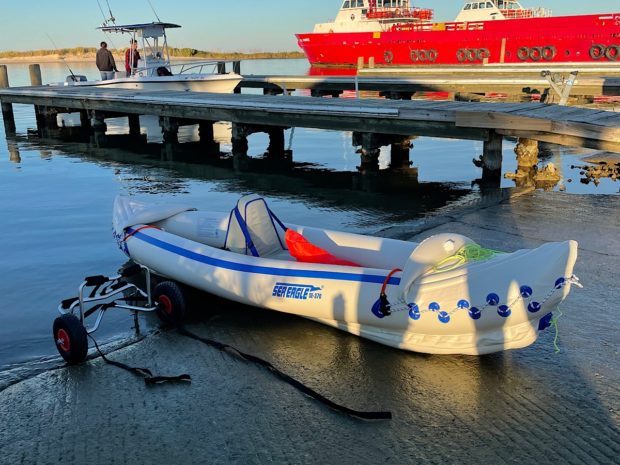
The trick is, getting the cart positioned just-so under the boat to keep the ass-end from dragging on the ground. That’s where a couple of stabilizing fins hang down, like the keel on a sailboat, to make the inflatable vessel more stable in the water.
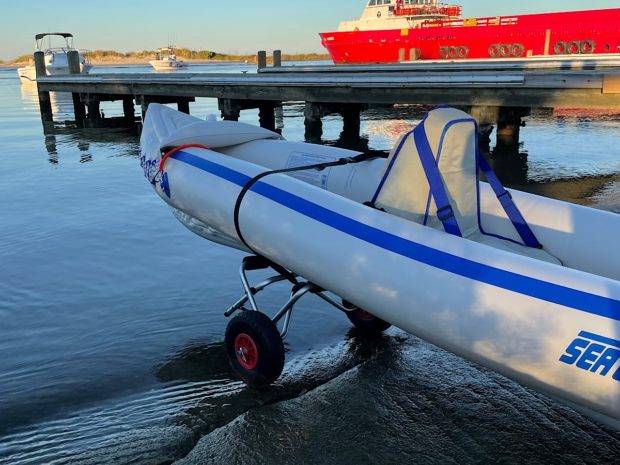
Once the wheels are in place and properly oriented, I can grab the kayak from the rope handle on the front and walk, easily pulling the kayak behind me. The first time I used the cart, it did take a couple tries to figure out the optimal position of the cart.
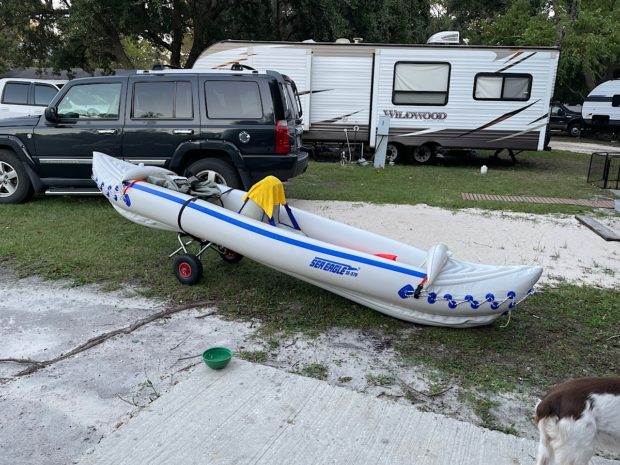
Yesterday, I happily made it to and from the boat launch without any issues. I am totally tickled to be able to walk with my kayak from our campsite to the water and back.
When my arms have rested, I’ll cart it out to the beach and do some kayaking there, conditions permitting. Dauphin Bay is relatively protected and safer for this beginning kayaker. Boating from the beach means I’m out on the more-open Gulf of Mexico. There is, however, a US Coast Guard station across the street from the campground should I need rescue.
Wouldn’t THAT make a fun story?
Now I am really, REALLY looking forward to returning to Florida in December. Not only will I be able to kayak on the Suwannee River, I’ll be able to go out on various springs and see Manatees. I hope.
